RARE ANTIQUE
E.S. RITCHIE & SONS Extremely Large
SKYLIGHT BINNACLE
Early 20th Century
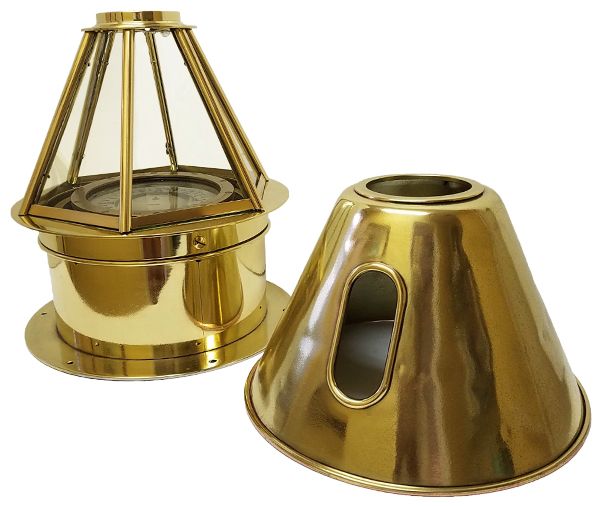
This presentation skylight or cathedral binnacle makes a dramatic statement of importance. It is a perfect gift or would serve as a beautiful focal point in any decor
Presented is a fine E.S. Ritchie & Sons, Boston, Skylight Binnacle in excellent condition considering its age and probable use at sea. It is one of the largest Skylight binnacles that we have offered. The compass is by Negus, although it was specifically done for Ritchie as noted on the compass card where “Ritchiei Boston” is in very small letters. We believe it was used in the early 20th Century and on a large size ship.
The brass hood has a large oval viewing port in front. Two of the glass panels in the skylite top are scored for aligning the compass point. The appearance is very striking compared to the binnacles which are most prevalent today.
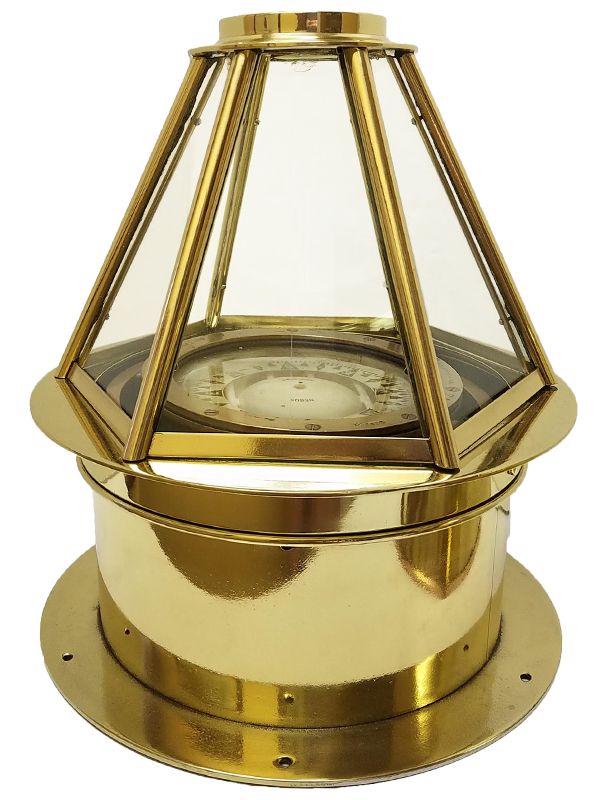
THE COMPASS: The fully gimbaled antique compass is of a Turn of the Century design. It measures 6 ¾” in diameter and is fitted with a 5 ¾” card. Stamped on the bezel is Serial Number 74252 and Richie & Sons, Boston. The solution is clear but missing some liquid and there is some white discoloration on the inside of the glass on one side.
The subdivisions are in Cardinal Points, N.S,E,W, and quarter points, NE,SE,SW,NW, then 1/2 points, 1/8 points and finally 1/16 points. There are 32 points on the compass card, each being 11 1/4 degrees. The outer circle is graduated in degrees from 0 to 350 with the north pointer as an ornate Fleur des Lis with the maker’s name and Boston.
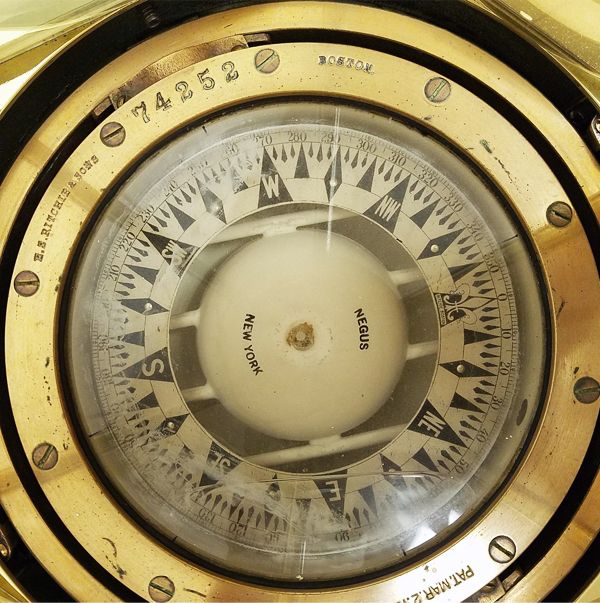
Compass is in Good Condition
DIMENSIONS:Casement
13″ H x 11 3/4″ W x 11 3/4″ D
Compass 6
3/4“ diameter
Card 5
3/4“ diameter
Estimated Weight 22 pounds
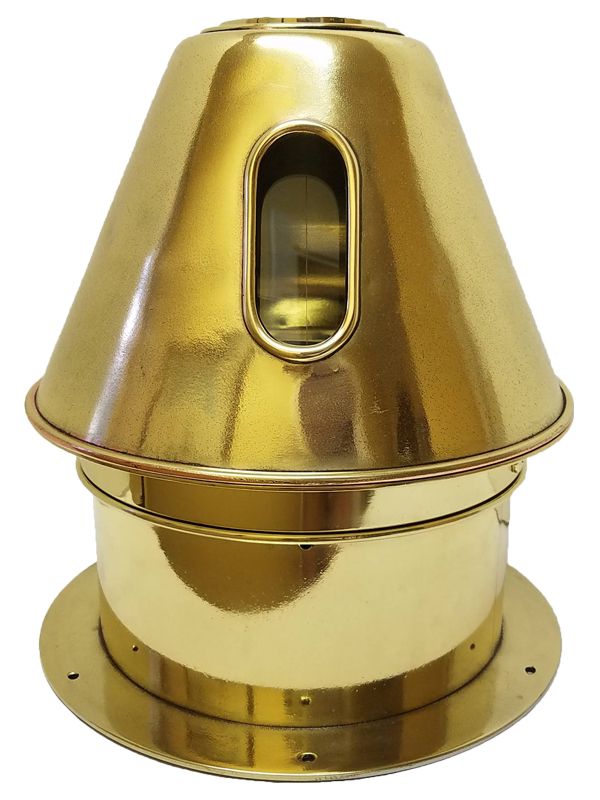 |
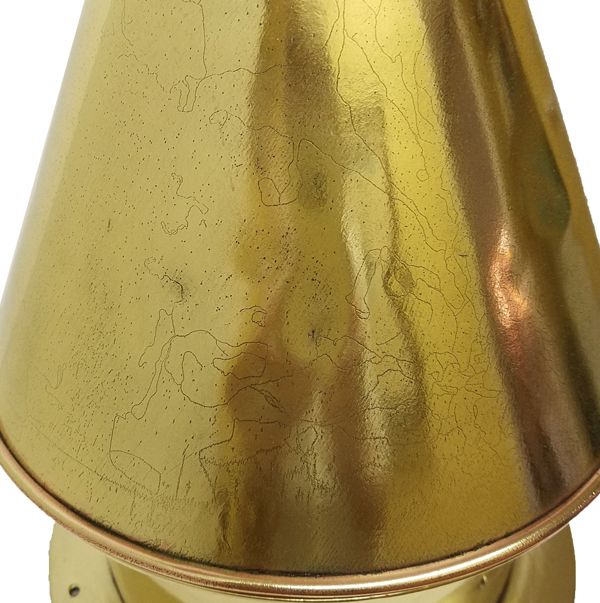 |
Binnacle with Hood
Binnacle Hood showing some crazing
E.S. RITCHIE, BOSTON:
In 1850 physicist Edward S. Ritchie began developing the first U.S. manufactured marine compass. He had received a contract to repair foreign-made compasses from the Boston Naval Shipyard, and he soon realized most of the problems he encountered could be eliminated. So when the US Naval Observatory put out a call for American Manufactured navigational instruments in 1861 it was no surprise who they contacted first.
Ritchie completed and sent samples of his work (including the first ever liquid filled compass) in June of 1861 and by August he received an order from the US Navy for 26 compasses, 10 of which were liquid filled. At this time Ritchie began selling compasses under the name E.S. Ritchie & Co., which was later changed to E.S. Ritchie & Sons in 1867. To this day E.S. Ritchie & Sons continues to produce marine navigation instruments.
A model of Ritchie’s first liquid filled compass is on display today in the Museum of Science in London, England; the only foreign product so honored.
In 1951 the company was purchased by Marine Compass Company. Louis A. Sherman founded the Marine Compass Company in 1910 and concentrated on producing smaller instruments for commercial and fishing vessels as well as the emerging yachting markets. The two companies consolidated all operations under the name E.S. Ritchie and Sons and is still owned by the Sherman Family.
